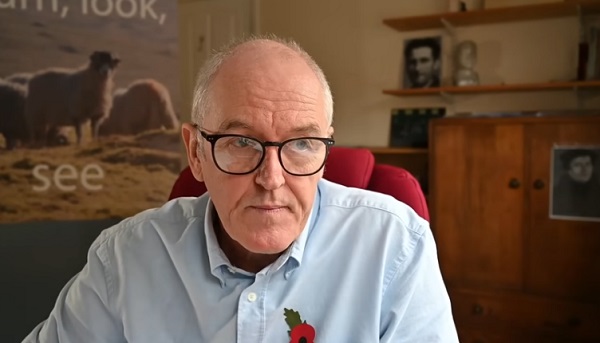Opinion
In 100+/- days we will vote for yesterday’s talk and ignore future’s needs.
At Large” versus “Ward” municipal governance.
In a 100 days or so, on October 16, 2017 there will be a municipal election and the citizens of Red Deer will vote for (1) mayor, (8) city councillors, (7) public school trustees, and (5) separate school trustees.
Red Deer uses the “At Large” system for voting so you have the option of voting for all positions mayor, councillors and school trustees either public or separate. 16 spots or 14 spots respectively.
The last election in 2013 we had 5 people running for mayor, 30 people running for council, 14 people running for public school board and 7 people run for the separate school board, 56 people in total.
How many people can remember all the candidates, anyone? Let us make it easier. How many people can remember , everyone who won, anybody?
The huge advantage of the current “At Large” system falls to and gives advantage to the incumbents (It looks like almost all the incumbents are running) and then to the more wealthier campaigns. The incumbents always have the advantage of name recognition and easier access to the media. Co-incidentally the incumbents had previously voted for and adopted a by-law limiting the number of signs candidates can post on one location.
It takes money to advertise to every household in the city, so naturally you will find that the wealthier candidates more often than not live in the wealthier neighbourhoods.
It is less expensive and easier for the city staff and management to deal with councillors, at large, in bulk than it would be to deal with the ward system and on individual basis. There is I have been told less infighting among councillors, perhaps because they have more in common, under the “at large” system than under the ward system. 7 of 8 current councillors live south of the river and east of Gaetz Avenue.
The advantage of the “Ward” system is that poorer neighbourhoods get equal representation. The citizens are closer to their elected officials and poorer candidates have smaller areas to cover. The city staff will have to refine their method of dealing with councillors in regards to neighbourhood issues.
There are pros and cons to both system, and we had a plebiscite on the issue during the 2013 municipal election. 71% voted to remain with the “At Large” system, feeling that Red Deer is still small enough to stay with this, the current system. The city council incumbents voted to budget $30,000 to inform the electorate of the issue, which was heavily in favor of the current system. They held an open house with a heavy leaning to the current system with just one local person, Larry Pimm, speaking, a popular former councillor, known for and speaking for the “At Large” system.
I believe that by looking at the city today, the current system has systematically and historically failed one third of our city.
One third of our city lives north of the river and they are currently represented by 1 person out of 9 at city hall. Out of 7 indoor ice rinks and 4 aquatic centres in Red Deer, they have 1 north of the river and the latest buildings are being built or planned south of the river. When it comes to school boards, the city has, is building and planning 6 high schools, all on the south side and 5 high schools are “unbelievably” along 30 Avenue.
On the north side of the river we have (1)the Dawe Centre, built in the 70s, and there are no plans to build a new recreation centre, including a swimming pool on the north side.
On the south side we have; (10), the Downtown Recreation Centre, Michener Aquatic Centre, Downtown Arena, Centrium complex, Collicutt Recreation Centre, Pidherney Curling Centre, Kinex Arena, Kinsmen Community Arenas, Red Deer Curling Centre, and the under-construction Gary W. Harris Centre. The city is also talking about replacing the downtown recreation centre with an expanded 50m pool.
Let us get back to voting. In 2013 we had 56 candidates for 21 spots and naturally most incumbents who ran, won. How can anyone know and understand the positions of 56 candidates. Many would like one or 2 newcomers, vote for them and fill the rest with known incumbents. They are sabotaging the chances of newcomers by voting and electing their own opposition.
I have been advocating for 4 wards within city limits. Each ward would have 25% of the population, give or take 5%. 100,000 residents would mean that each ward would have between 23,750 and 26,250 and the boundaries would change with the population growth.
Each ward would elect 2 councillors, perhaps the school boards would adopt the ward system, so the public school board could for example. have 2 trustees from each ward, and the mayor would be elected city wide.
Using the 2013 ballot, you would elect 1 mayor out of 5 candidates, you would elect 2 councillors out of 7 or 8 depending on the ward and the public school voters would elect 2 trustees out of 3 or 4 candidates, again, depending on the ward.
Perhaps under the ward system, with representation at the table, using my previous arguments, the residents living north of the river will actually get a new indoor ice rink, swimming pool and perhaps (dare I dream),their own high school. One can only dream.
The incumbents will say no to the ward system, stating the small size of Red Deer, omitting the fact that most incumbents are relying on their constituency of voters that are spread across the city and their constituency of voters may not be strong enough in only one ward.
Lately, there has been some voices out of city hall, demanding to be recognized as a big city and to be included in the “Big City Charter” and the extra money and power associated with it. Incidentally the cities covered by the big city charter currently use the “ward” system.
Should we hold another plebiscite, asking that our councillors represent their neighbours, should we ask that school board trustees represent the neighbourhood families, should we take the step to recognize that Red Deer is now a big city and not that small town anymore, and prepare for and govern like a big city. I am arguing that our city is big enough but it is actually shrinking, while the city is arguing it is still a small town while demanding recognition as a growing city.
2017 may see a few candidates run against the incumbent mayor but we may see in excess of 30 candidates run for city council and in excess of 20 candidates running for one of the 2 school boards’ trustee positions. Under the current system we will again see governing concentrating their attention in the same areas like downtown or the east hill. We will continue to ignore the needs of residents living in neighbourhoods like those north of the river.
“At Large” is an ideal that fails when reality is involved, the “Ward” system is a flawed ideal that may best represent our reality. What would do you think? It is your home.
Keep in mind that under the “AT Large” voting system the constituency comprising of on-average one-third of our residents, living north of the river decreased by 777, while the constituency comprising on-average two-thirds of our residents living south of the river only decreased by 198, last year.
Is this the proof that we may need the “Ward System”? Just asking for some serious discussion. Thank you.
Dr John Campbell
Cures for Cancer? A new study shows incredible results from cheap generic drug Fenbendazole

From Dr. John Campbell
You won’t hear much about Fenbendazole from the regular pipeline of medical information. There could be many reasons for that. For one, it’s primarily known for it’s use in veterinary medicine. Somehow during COVID the medical information pipeline convinced millions that if a drug is used on horses or other animals it couldn’t work for humans. Not sure how they got away with that one considering the use of animal trials for much of modern medical history.
Another possible reason, one that makes at least as much sense, is that there’s no business case for Fenbendazole. It’s been around for decades and its patent expired in the early 1990’s. That means it’s considered a generic drug that a pharmaceutical company from India could (and does) produce in mass quantities for very little profit (compared to non-generics).
So Fenbendazole is an inexpensive, widely accessible antiparasitic drug used in veterinary medicine. During the COVID pandemic a number of doctors, desperate for a suitable treatment, tried it with reportedly great levels of success. Over some time they discovered it might be useful elsewhere. Some doctors are using Fenbendazole to help treat late stage cancer. Often this is prescribed when the regular treatments clearly aren’t working and cancer is approaching or has already been declared stage 4.
What they’ve found at least in some cases is astounding results. This has resulted in a new study which medical researcher Dr. John Campbell shares in this video.
Energy
It should not take a crisis for Canada to develop the resources that make people and communities thrive.

From Resource Works
Canada is suddenly sprinting to build things it slow-walked for a decade.
“Canada has always been a nation of builders, from the St. Lawrence Seaway to Expo 67. At this hinge moment in our history, Canada must draw on this legacy and act decisively to transform our economy from reliance to resilience. We are moving at a speed not seen in generations,” announced Prime Minister Mark Carney at the end of August.
He was echoed by British Columbia Premier David Eby shortly after.
“There’s never been a more critical time to diversify our economy and reduce reliance on the U.S., and B.C. is leading the way in Canada, with clean electricity, skilled workers and strong partnerships with First Nations,” the premier stated after his government approved the Ksi Lisims LNG project, led by the Nisga’a nation.
In the face of President Donald Trump’s tariffs, Ottawa has unveiled a first wave of “national projects” that includes an expansion of LNG Canada to 28 million tonnes a year, a small modular reactor at Darlington, two mines, and a port expansion, all pitched as a way to “turbocharge” growth and reduce exposure to a trade war with the United States.
The list notably excludes new oil pipelines, and arrives with rhetoric about urgency and nation-building that begs a simple question: why did it take a crisis to prioritize what should have been routine economic housekeeping?
The most tangible impact of resource projects can be observed in the impact it has on communities. The Haisla Nation is enjoying an economic renaissance with their involvement in the LNG Canada project on their traditional lands, which became operational in June.
Furthermore, the Haisla are set to unveil their own facility, Cedar LNG, in 2028. Already, the impact of employment and strong paycheques in the community is transforming, as former Haisla Chief Councillor Crystal Smith as attested many times.

Former Haisla Chief Councillor Crystal Smith.
“Let’s build a bright and prosperous future for every Canadian and every Indigenous person that wants to be involved, because change never happens inside of our comfort zones, or the defensive zone,” said Crystal Smith at a speech delivered to the 2025 Testimonial Dinner Award on April 24 in Toronto.
Fortunately, the new pro-resource posture has a legislative backbone. Parliament passed the One Canadian Economy Act to streamline approvals for projects deemed in the national interest, a centrepiece of the government’s plan to cut internal trade barriers and fast-track strategic infrastructure.
Supporters see it as necessary in a period of economic rupture, while critics warn it risks sidelining Indigenous voices in the name of speed. Either way, it is an admission that Canada’s previous processes had become self-defeatingly slow.
British Columbia offers a clear case study. Premier David Eby is now leaning hard into liquefied natural gas. His government and Ottawa both approved the Nisga’a Nation-backed Ksi Lisims LNG project under a “one project, one review” approach, with Eby openly counting on the Nisga’a to build support among neighbouring nations that withheld consent.
It is a marked turn from earlier NDP caution, framed by the premier as a race against an American Alaska LNG push that could capture the same Asian markets.
Yet the pivot only underscores how much time was lost. For years, resource projects faced overlapping provincial and federal hurdles, from the Impact Assessment Act’s expanded federal reach to the 2018 federal tanker ban on B.C.’s north coast.
Within B.C., a thicket of regulations, policy uncertainty, and contested interpretations of consultation obligations chilled investment, while political positions on pipelines hardened. Industry leaders called it “regulatory paralysis.” These were choices, not inevitabilities.
The national “go-fast” stance also arrives with unresolved tensions. Ottawa has installed a Calgary-based office to clear and finance major projects, led by veteran executive Dawn Farrell, and is touting the emissions performance of LNG Canada’s expansion.

Dawn Farrell, head of the Major Projects office in Calgary.
At Resource Works, we wholeheartedly endorsed the move, given the proven ability and success of Dawn Farrell in the resource industry. It must also be acknowledged that the major projects office will only be an office unless it meaningfully makes these projects happen faster.
A decade that saw eighteen B.C. LNG proposals produced one major build, and moving to LNG Canada’s second phase is entangled with power-supply constraints and policy conditions. That slow cadence is how countries fall behind.
If the current urgency becomes a steady habit, Canada can still convert this scramble into lasting capacity. If not, the next shock will find us sprinting again, only further from the finish line.
Resource Works News
-

 Agriculture1 day ago
Agriculture1 day agoBovaer Backlash Update: Danish Farmers Get Green Light to Opt Out as UK Arla Trial Abruptly Ends!
-

 International1 day ago
International1 day agoBBC boss quits amid scandal over edited Trump footage
-

 Alberta1 day ago
Alberta1 day agoSchool defunding petition in Alberta is a warning to parents
-

 Daily Caller1 day ago
Daily Caller1 day agoMcKinsey outlook for 2025 sharply adjusts prior projections, predicting fossil fuels will dominate well after 2050
-

 Agriculture1 day ago
Agriculture1 day agoFarmers Take The Hit While Biofuel Companies Cash In
-

 Business19 hours ago
Business19 hours agoCarney’s Floor-Crossing Campaign. A Media-Staged Bid for Majority Rule That Erodes Democracy While Beijing Hovers
-

 Frontier Centre for Public Policy1 day ago
Frontier Centre for Public Policy1 day agoNotwithstanding Clause Is Democracy’s Last Line Of Defence
-

 Business1 day ago
Business1 day agoCarney government needs stronger ‘fiscal anchors’ and greater accountability







